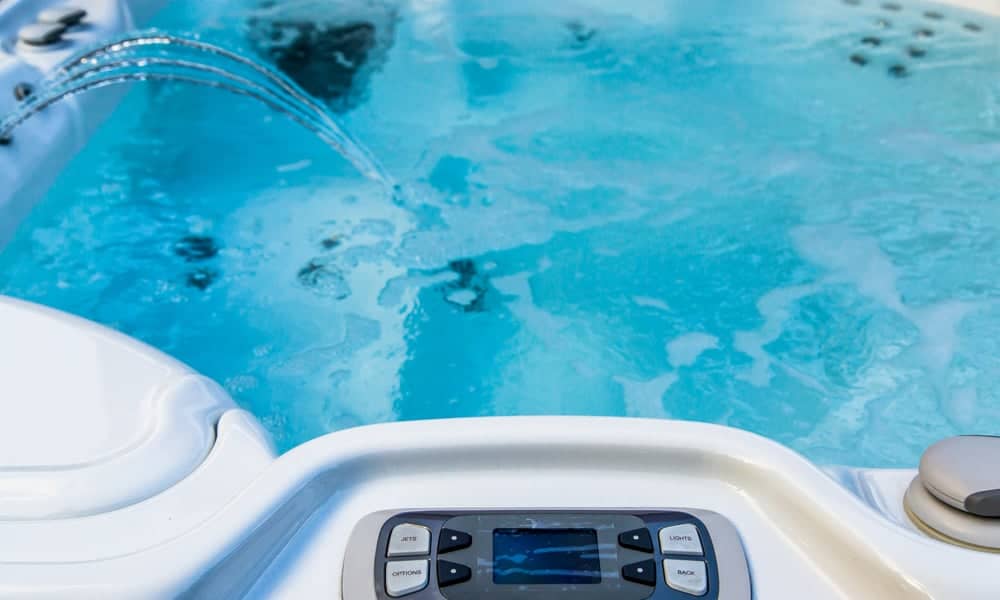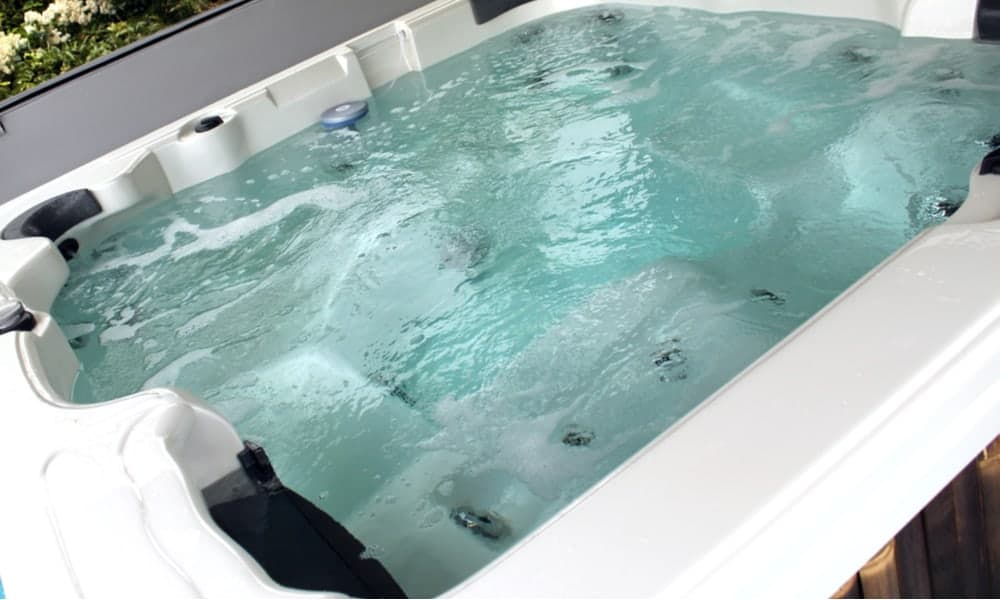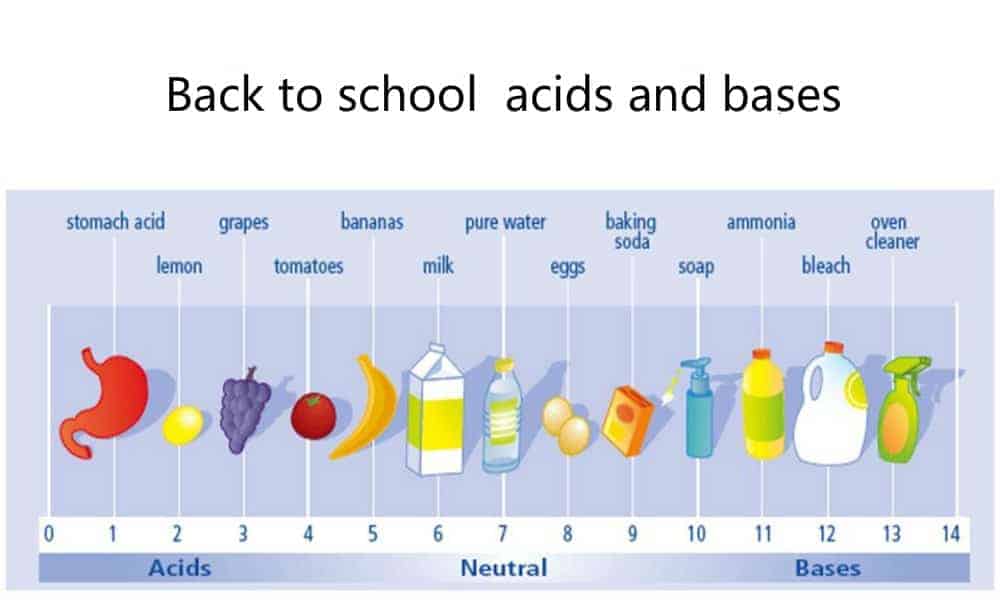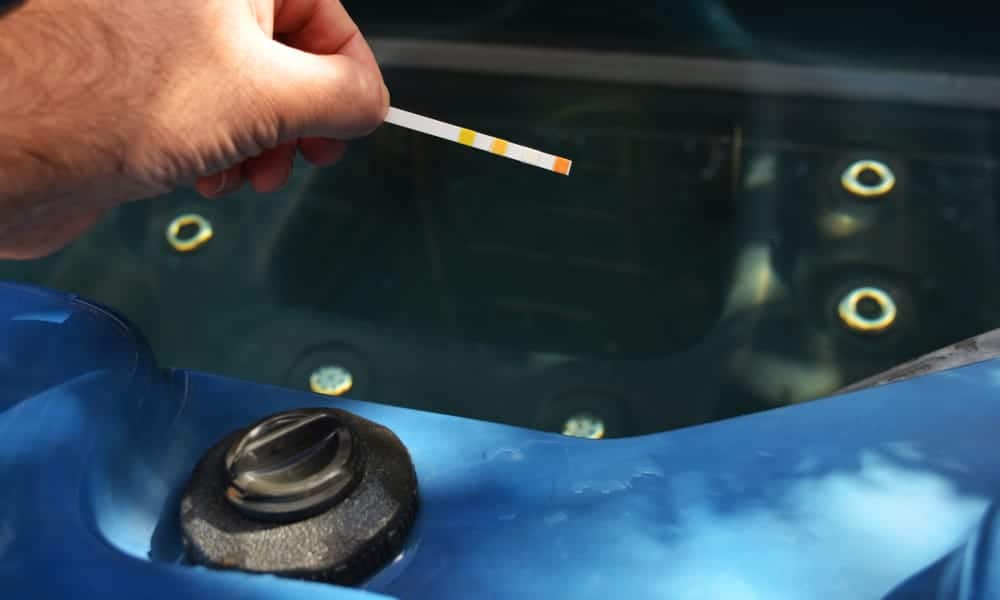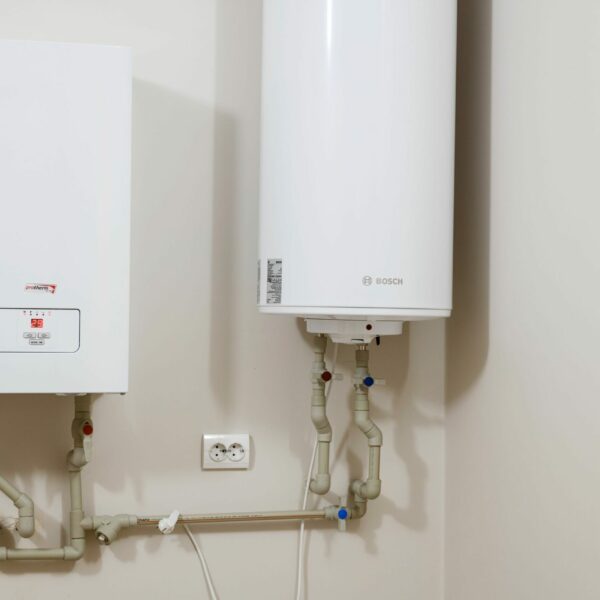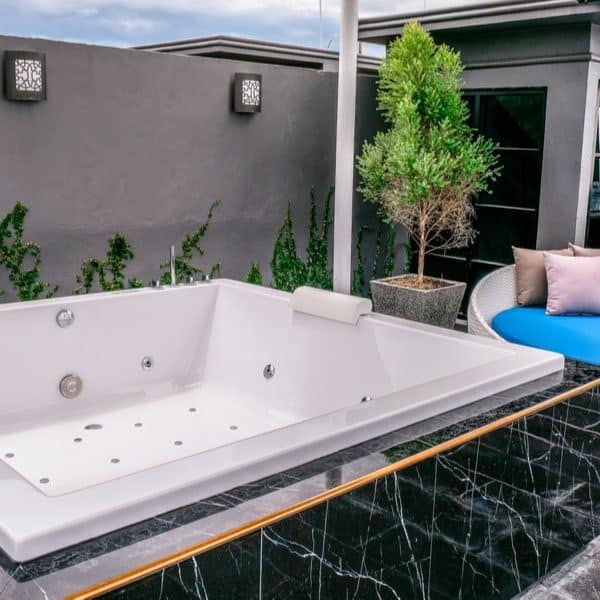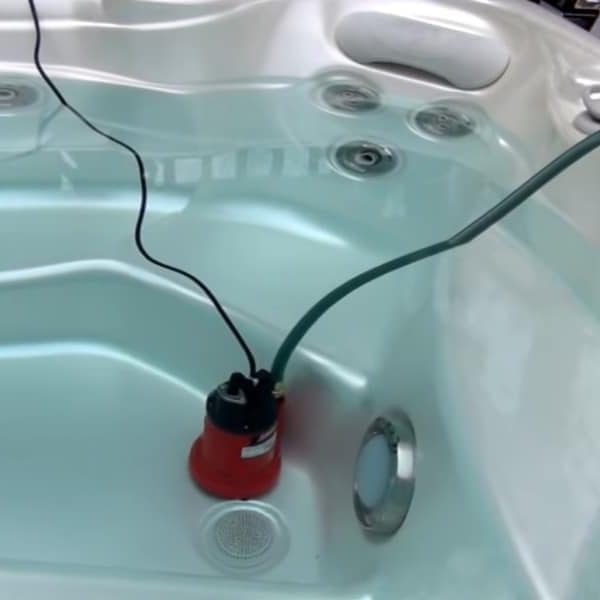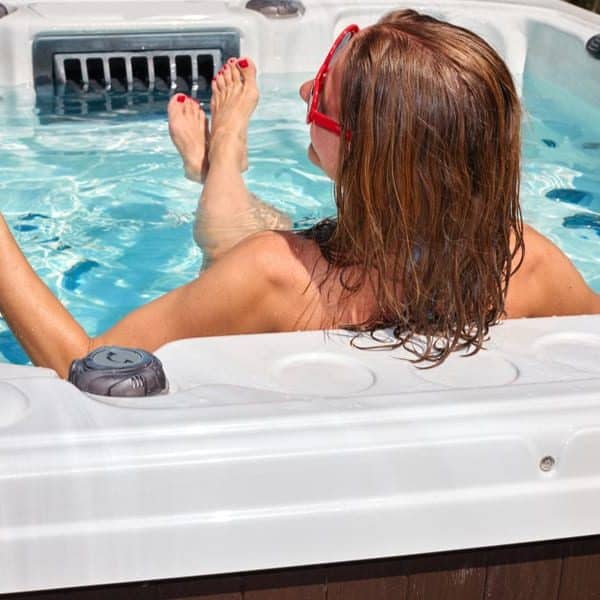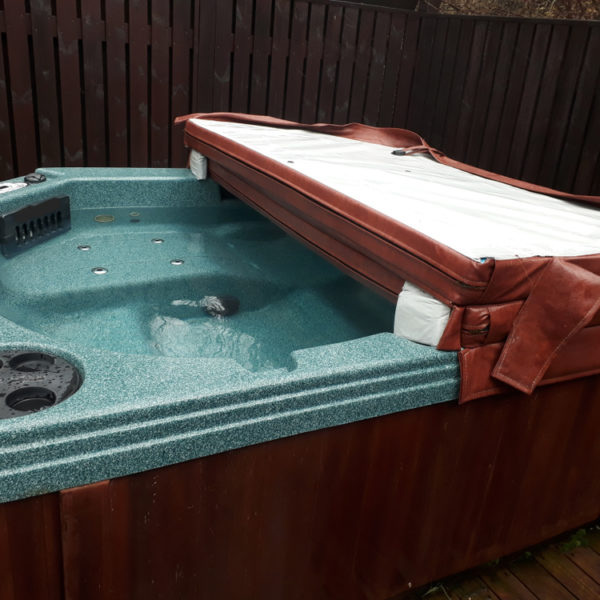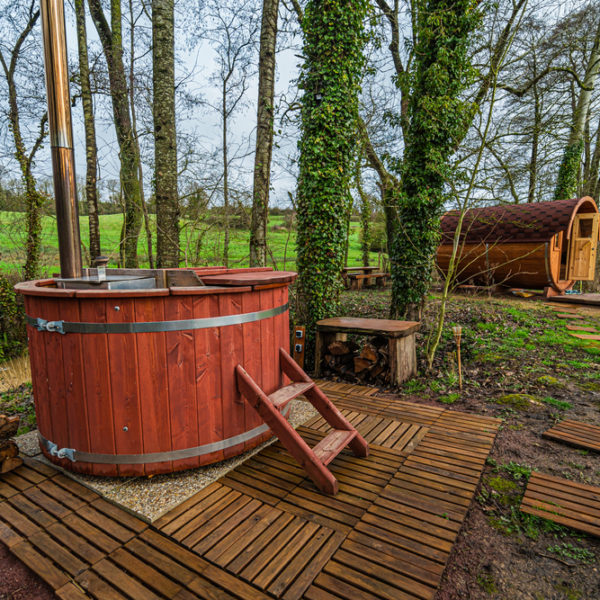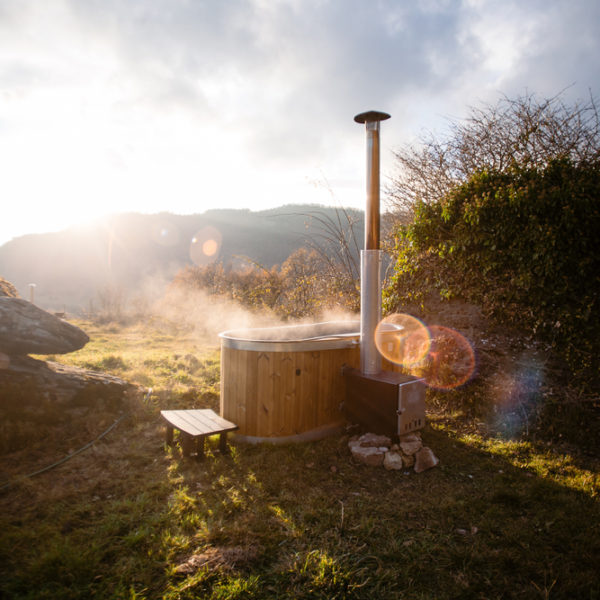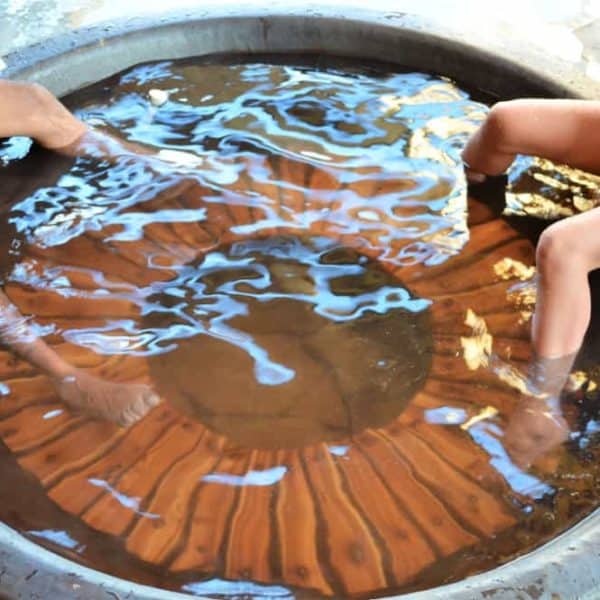Owning a tub is a great luxury, and spending time submerged in the hot water and bubbles is the perfect way to unwind, relax and forget all the stresses of your day. However, as any hot tub owner will tell you, they also require a fair amount of maintenance.
One of the biggest jobs you have to take care of is monitoring the water to ensure its chemical composition stays just right. Part of this involves keeping the correct balance of alkalinity – so here’s a guide to how to lower alkalinity in a hot tub for when it gets too high.
If you want a preview of some of the stuff we’re going to be talking about, you can check out this video before reading on.
Why is high alkalinity bad?
Why exactly is it so important to maintain the correct balance of alkalinity in your hot tub?
If the alkalinity of your water is too high, it can lead to an imbalance in the pH value of the water (we’ll be talking more about the difference between pH and alkalinity in a moment).
This can result in high levels of calcium in the water, which in turn can lead to scaling, cloudy water and clogged filters. It also decreases the effectiveness of water sanitizers like chlorine or bromine and can even cause itchy skin for anyone using the tub.
So as you can see, it’s something you want to avoid.
What about low alkalinity?
If high alkalinity is so bad, why not just try to keep it as low as possible? Well, unfortunately, that won’t work either since low alkalinity is also not desirable.
If the alkalinity is too low, the water in your tub will become corrosive and will start attacking any metal surfaces it is exposed to. If you have water with low alkalinity, over time it will cause serious damage to your tub.
So again, this is something to avoid. This is why you need to monitor your tub water carefully to ensure the alkalinity – you need to make sure it is not too high and not too low.
Back to school – acids and bases
Before we talk about how to lower the alkalinity of your hot tub, we need to understand something about the basics of what we are doing, and that’s going to mean talking a bit about some science stuff – but we’ll try to keep things as simple and easy to understand as possible.
From your school chemistry classes, you may remember something about acids, bases and pH values.
In short, the pH value is a measure of how acidic or how basic a solution is. Acids have pH values of less than 7, bases have pH values of more than 7 – and a pH value of 7 is neutral.
For example, coffee has a pH value of about 4.5-6, so it slightly acidic – and lemon juice has a pH value of around 2-3, making it more acidic than coffee. Hydrochloric acid has a pH value of 1-2, making it much more acidic than either.
On the other hand, eggs have a pH value of around 9, making them slightly basic while bleach has a pH value of around 13, making it highly basic. So far so good?
Alkalinity vs pH
We don’t need to lose ourselves in the science, but when we are talking about hot tub care, some confusion arises over the terms “alkalinity” and “pH”.
Perhaps understandably, some people fall into the trap of believing that alkalinity is the same as the pH level – but this is not true.
If the water in your hot tub has a pH value above 7, we can say that the water is basic, but that is not the same as alkalinity. Instead, the alkalinity of the water refers specifically to how much acid it can neutralize.
An alkali dissolved in water has the ability to neutralize acid, and the total alkalinity (TA) is a measure of how much alkaline substance is dissolved in the water. It is measured in parts per million (ppm), and tub water should ideally have a TA of 80-120ppm.
If the water in your tub has the correct alkalinity, it is more able to counteract changes in the pH value of the water and resist the effects we noted above, and this is why it is important to have water in your tub that has the correct alkalinity.
So, as we can see, alkalinity and pH are closely related, but they are not the same – for further explanation of the difference between alkalinity and pH, you can also check out this video.
Testing – how and when
The first step in adjusting the alkalinity of your tub is testing it with a testing kit or strips. These can be bought in many department stores as well as from spa stores and online.
Whichever method you use, simply follow the instructions on the pack to take a reading of your tub’s alkalinity.
As we have already mentioned, the water in a hot tub should have an alkalinity of 80-120ppm, but even if your tub’s alkalinity is perfect when you measure it, you should still continue to test it twice a week since it can change quickly. This is a very basic part of hot tub maintenance.
Remember, too, that this is just as true if you own an inflatable hot tub as a more permanent version – care and maintenance might be slightly different, but monitoring the chemical composition of the water is the same.
Lowering alkalinity
If you find your hot tub has an alkalinity of above 120ppm, you need to lower it – you should aim for about 100ppm.
The easiest way to lower alkalinity is to add sodium bisulfate to the water.
The first thing you need to do is calculate how much sodium bisulfate you need to add according to the volume of water in your tub as well as how much you need to lower the TA.
You can work this out if you know that, to lower the alkalinity of 1,000 gallons of water by 10ppm, you need to add 3.5oz of sodium bisulfate.
This would mean, for example, that to lower the alkalinity of 500 gallons of water by 10ppm, you need half that much – 1.75oz of sodium bisulfate. This is about the capacity of a large six-person hot tub. A smaller two-person hot tub could require much less.
Once you have measured out the correct amount, set your tub to circulate and pour in the sodium bisulfate. Leave it to circulate for a further 20 minutes and then shut it off.
Once the water has stopped moving, leave the tub for an hour or so and then test the water again. If you still need to lower the alkalinity further, simply repeat the steps above.
Once you reach the correct alkalinity, leave the tub overnight and then test again the following day to be sure the alkalinity is still at the correct level.
Here’s a video of a slightly different method using a special product designed to lower the alkalinity of hot tubs. Although the technique is different, the basic concept is the same.
Raising the alkalinity
What happens if you add too much sodium bisulfate and the alkalinity drops too far? In that case – or if your alkalinity drops below 80ppm for any other reason – you need to bring it back up again.
To raise the alkalinity, the procedure is the same as the for lowering the alkalinity. The only differences are what you use to do it and the dose you need.
To raise the alkalinity of your hot tub, you should use sodium bicarbonate, and the dose is 2.25oz per 1,000 gallons of water to raise alkalinity by 10ppm.
This means to raise the alkalinity of a 500-gallon hot tub but 10ppm, you need to add 1.125oz of sodium bicarbonate.
While the tub is circulating, add the sodium bicarbonate around the edges and leave for 20 minutes before turning the tub off. Leave it to sit for an hour and then test again. If the alkalinity still isn’t high enough, simply repeat the process.
Once the water reaches the desired level of alkalinity, leave it overnight and come back the next day to test it again.
Test pH levels again
After you bring your alkalinity to the correct level, make sure you don’t forget to retest your pH level. This is because whenever you adjust the alkalinity of your tub, it will also probably alter the pH level of the water.
If you find that the pH level is out (the ideal reading for this is in the mid-7s on the pH scale), you will now need to adjust this.
There are several ways to change the pH level of your tub, and perhaps the easiest is to use a dedicated pH adjustment product – although the details of how to do that is a discussion for another day.
Always monitor your water for best results
If you own a hot tub, you need to monitor your water constantly, and testing it twice a week is recommended. This will allow you to discover any chemical imbalances quickly and take the necessary steps.
This will not only increase the hot tub’s life but also give you and your family a more pleasurable bathing experience.
